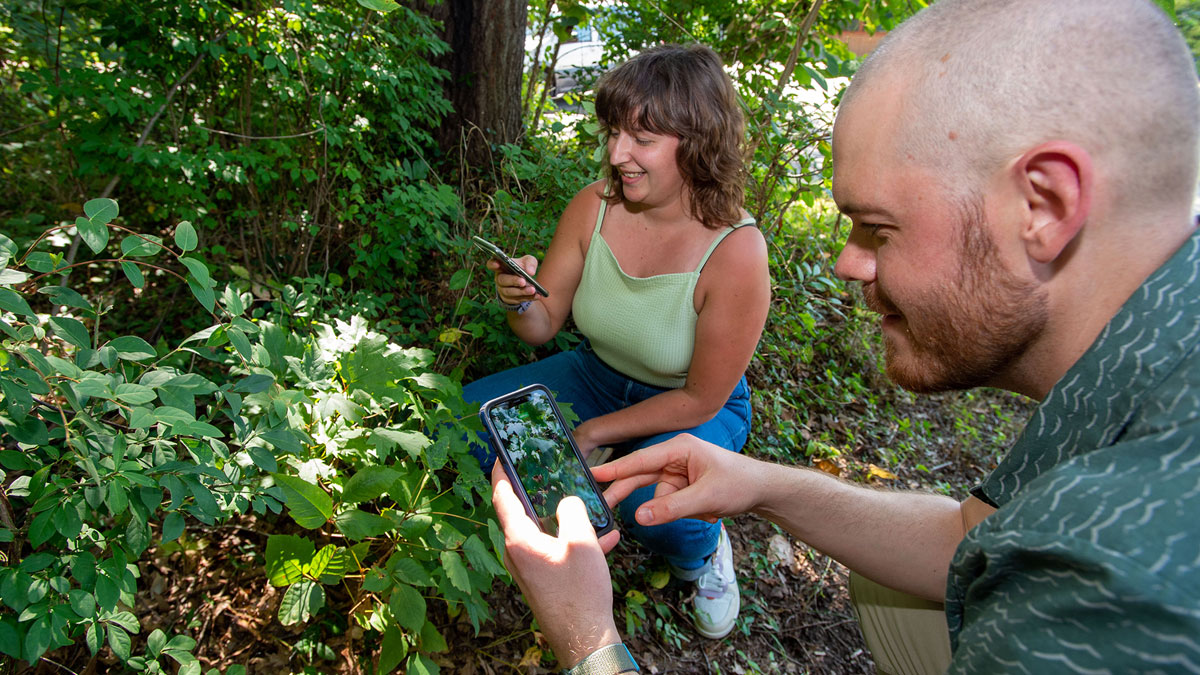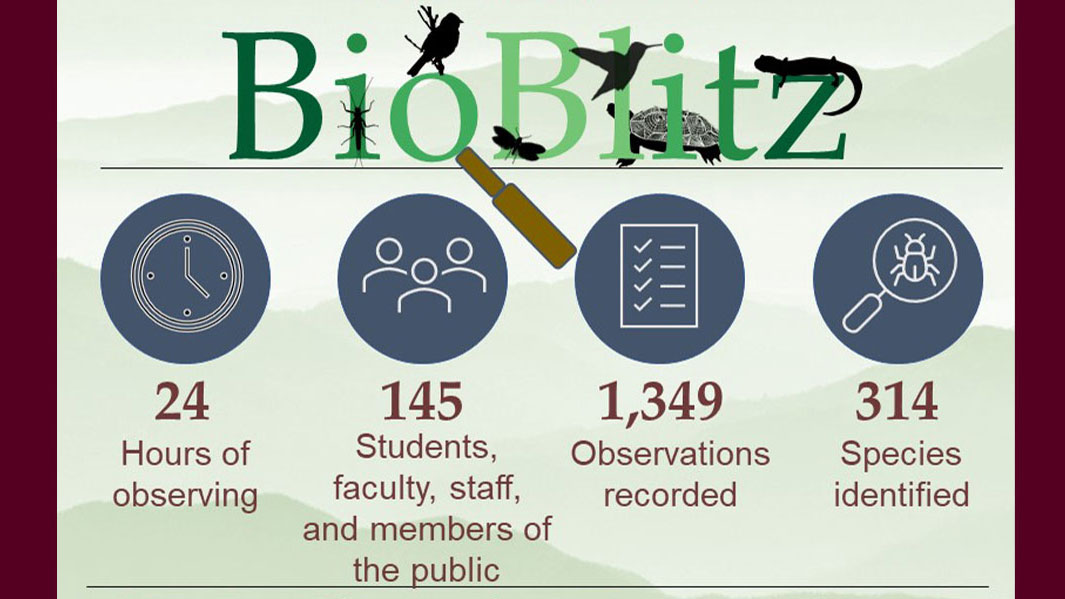
Brent Pease, right, assistant professor of forestry in the School of Agricultural Sciences, works with forestry graduate student Elaine Metz during the inaugural BioBlitz at SIU last year. This year’s daylong effort is set for Aug. 26 on the SIU campus, with dozens of volunteers recording as many species as possible. (Photo by Russell Bailey)
August 09, 2022
SIU’s 2nd Saluki BioBlitz enlists citizen-scientists to survey wildlife on campus
CARBONDALE, Ill. – Southern Illinois University Carbondale and the surrounding community are about to find out more about their wildlife “neighbors” as a researcher prepares a second public survey of the flora and fauna populating campus.
The second annual 24-hour Saluki BioBlitz is set for Aug. 26, rain or shine. A BioBlitz is a concentrated effort to record as many species as possible within a designated location and time period, which can vary from a single day to an entire month. The designated location can be anywhere but is usually a clearly defined place such as a park or university campus.
During last year’s inaugural effort, 145 volunteers filed about 1,350 observation reports, which identified more than 300 species of plants and animals living in the area. Plants made up the vast majority of the observed species, followed by insects. Fungi and mammals were approximately tied for third, with birds, spiders, amphibians and reptiles bringing up the rear.
The effort not only highlighted the diversity of plants and animals, but also helped spot invasive species that might potentially alter the native Southern Illinois ecosystem.
Brent Pease, assistant professor of wildlife in the School of Forestry and Horticulture, organized the effort. He said he’s confident volunteers will detect even more species this time around.
“The first one went really well,” Pease said. “I think we learned that far more species exist on the SIU campus than people might expect.”
BioBlitz is part of Pease’s “citizen science” efforts, which is the practice of involving the general public of all ages, as well as SIU students, staff and faculty, in any part of the scientific process. Participants record their observations via a smartphone app connected to an online platform called iNaturalist. The online community then works together to identify all the observations to the highest taxonomic resolution possible.
This year’s effort will be very similar to the first one, although Pease anticipates even more community engagement, including participation from neighboring community colleges. SIU’s wooded campus, supplemented by its Thompson Woods and Campus Lake, provides ample opportunity for nature to flourish amid the busy university atmosphere.
“We have the same goal each year – to get out in nature, discover something new – to you or even to the world – and document biodiversity across SIU’s campus,” Pease said. “This is a great opportunity for new students at SIU to learn about campus, discover their favorite spot to unwind from coursework, and contribute to an important mission of describing SIU’s biodiversity.”
As habitats change and plants and animals face evolving pressures, Pease said regularly taking stock of the natural inventory is particularly important. BioBlitz gives a community and researchers a wildlife snapshot. Once researchers collect several years of data, they can start to build a better picture to understand where and how species composition is changing across time and space.
“Many species are declining at alarming rates – quite literally blinking out – and BioBlitzes can be important community events that help track species presence or absence over time,” he said. “There is also the looming threat of non-native and invasive species continuing to spread, including some that may not have been detected in Illinois before. So our continued, concentrated efforts over a relatively small area are a way to keep track of the spread of these species.”
The SIU BioBlitz results will remain online in open-access biodiversity databases, Pease said. This allows researchers, wildlife managers, practitioners and the general public to use the information to understand when and where a given species occurred in history.
Click on the graphic to see results of the 2021 Saluki BioBlitz.

